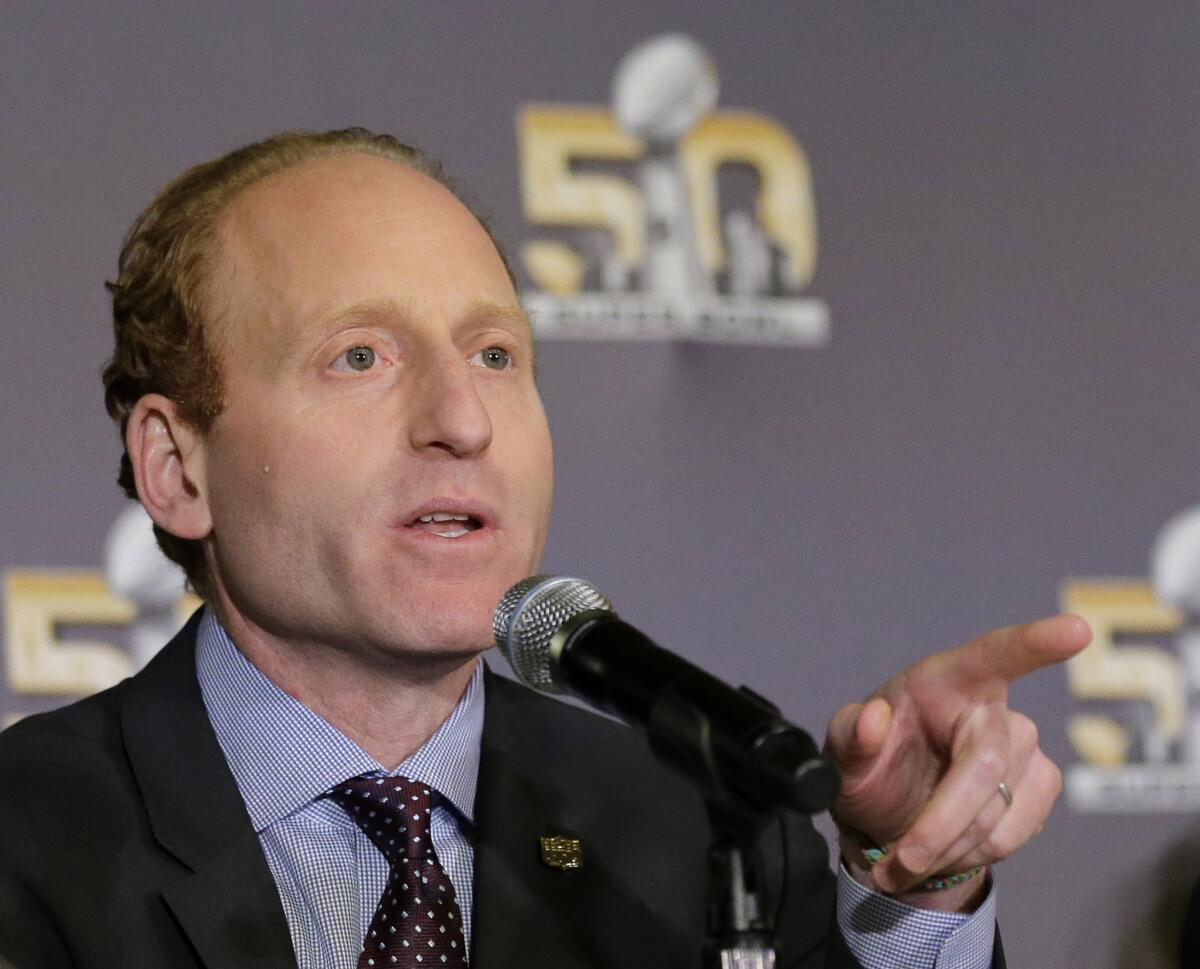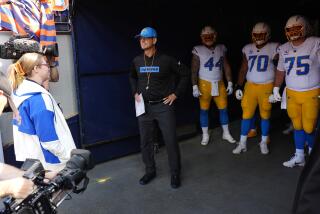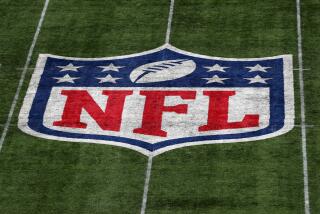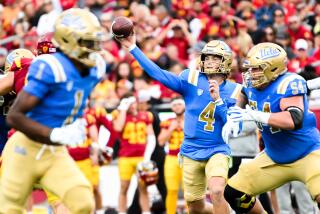NFL executive acknowledges a link between football-related head trauma and CTE

Jeff Miller, NFL senior vice president of health and safety policy, is seen last month.
- Share via
In what could be a watershed moment in the debate about the long-term effects of head injuries in the nation’s most popular sport, the NFL’s top health and safety executive acknowledged Monday for the first time that there is a connection between football-related brain trauma and a degenerative disease that can be diagnosed only after death.
While appearing before a congressional committee, Jeff Miller, the league’s senior vice president for health and safety, was asked if there is a link between football and chronic traumatic encephalopathy, or CTE, based on the research of neuropathologist Ann McKee.
“Well, certainly Dr. McKee’s research shows that a number of retired NFL players were diagnosed with CTE, so the answer to that question is certainly yes,” Miller said. “But there’s also a number of questions that come with that.”
Miller’s comments were made at a roundtable discussion of concussions before the House Committee on Energy and Commerce, which included concussion experts and representatives of the federal government, military, scientific community and various sports leagues.
Evidence of the disease has been found posthumously in several prominent retired players, among them Junior Seau, Frank Gifford, Ken Stabler, Dave Duerson, and Mike Webster. The disease is associated with symptoms such as depression, memory loss and dementia.
McKee leads the VA-BU-CLF Brain Bank, a collaboration among the U.S. Department of Veterans Affairs, Boston University and the Concussion Legacy Foundation. The group has diagnosed CTE in 176 former athletes, 141 of whom were football players, with evidence of the disease showing up in 90 of 94 brains of former NFL players, 45 of 55 former college players, and six of 26 people who didn’t play football past high school.
It’s notable that instead of being a random sampling, many of the brains studied were those of former players who had displayed signs of problems that could be related to head trauma.
At the Super Bowl last month, Dr. Mitch Berger, a member of the NFL’s head, neck and spine committee, would not make the definitive link between football and CTE. He repeatedly said that though the disease had been diagnosed in former players, it also has been found in “all spectrums of life.”
Chris Nowinski, executive director of the Concussion Legacy Foundation and a former Harvard football player, said Miller’s acknowledgment Monday was a milestone moment.
“The NFL spent years trying to convince the public that a link hasn’t been established,” Nowinski said. “We now need to tell them, ‘The NFL believes there’s a link. And if the NFL believes there’s a link, you should believe there’s a link, because they’re the last people that want to believe there’s a link.’
“There’s nothing wrong with adults playing in the NFL. They have a union to protect them, and they’re educated on concussions and CTE. They’re allowed to do a dangerous job to put food on the table for their families. But the fact that we have so many millions of children, some as young as 5 years old, bashing heads, and now we know exposing themselves to the risk of CTE, that conversation now becomes front and center.”
Even though the NFL now admits to a link between brain trauma and CTE, the league is not obligated to compensate retired players who develop the disease in the future, according to the terms of a pending settlement to concussion litigation.
A year ago, a federal judge granted final approval to a settlement in the long-running concussion litigation against the league by retired players. That deal, which compensates some players suffering from a variety of conditions, is on hold pending the outcome of an appeal.
In 2014, the league released the findings of a study predicting that about three in 10 retired players will develop serious neurocognitive problems such as Alzheimer’s disease or amyotrophic lateral sclerosis. The report did not include CTE.
According to the settlement, the families of players who received a postmortem diagnosis of CTE prior to the deal’s final approval could be eligible for up to $4 million. The total depends on seasons in the league, age at diagnosis and other factors. However, the agreement does not compensate for CTE after the deadline, which was April 22, 2015, a point of contention in the appeal.
Two attorneys involved in the litigation against the NFL said they don’t think that Monday’s development will have any impact on the settlement with retired players.
A third attorney, Steven Molo, representing some retired players in the appeal, had a succinct response to the NFL’s making the connection between football and CTE: “It’s about time.”
ALSO
Byron Scott wants to seem the same effort the Lakers showed in win over Warriors
Hard-throwing Angels pitcher Garrett Richards looks to change things up
Rams add secondary depth by signing Coty Sensabaugh
More to Read
Go beyond the scoreboard
Get the latest on L.A.'s teams in the daily Sports Report newsletter.
You may occasionally receive promotional content from the Los Angeles Times.












